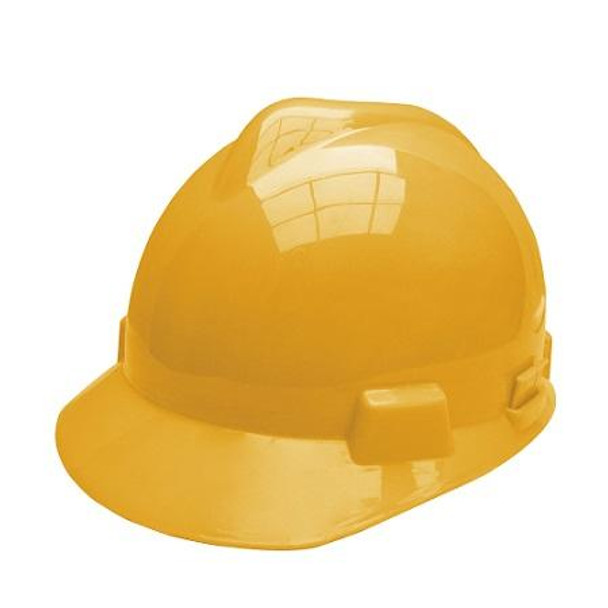Industrial Safety Gear: Emerging Technologies in Personal Protection
Introduction
In industrial environments, safety gear is not just a requirement, it is a lifeline. From construction sites to manufacturing plants, the use of personal protective equipment (PPE) is critical to safeguarding workers against potential hazards. Traditionally, PPE has included items such as helmets, gloves, safety glasses, and protective clothing. While these have been effective in reducing injuries, the evolving nature of industrial work and the introduction of new technologies have highlighted the need for more advanced forms of protection.
This article delves into the latest innovations in industrial safety gear, focusing on emerging technologies that go beyond the basics of traditional PPE. As industries face new and complex challenges, it is essential to explore how modern safety equipment is adapting to meet these demands. We will examine the role of smart technology, advanced materials, and AI-driven systems in enhancing personal protection, ensuring that workers are equipped to handle the hazards of today and tomorrow.
Safety Helmet (Yellow) INGCO HSH06
The Need for Advanced Safety Gear
1. Rising Workplace Hazards
The industrial landscape is becoming increasingly complex, with new technologies and processes introducing a range of workplace hazards. The integration of automation, high-tech machinery, and chemical processes has raised the stakes, making traditional safety gear insufficient for the risks at hand. Workers are now exposed to hazards that were previously unimaginable, such as exposure to toxic substances, high-voltage machinery, and extreme temperatures.
2. Limitations of Traditional Safety Gear
While traditional PPE has played a crucial role in protecting workers, it has its limitations. For instance, conventional helmets and gloves may not provide adequate protection against high-tech hazards, and basic respiratory masks may fail to filter out harmful nanoparticles. Moreover, traditional safety gear is often bulky and uncomfortable, leading to reduced compliance among workers. As industries evolve, there is a pressing need for safety equipment that is not only more effective but also more adaptable to the dynamic conditions of modern industrial work.
Learn more: How to Choose the Right Safety Equipment for Your Workplace
Smart Personal Protective Equipment (PPE)
1. Wearable Technology in PPE
One of the most significant advancements in industrial safety gear is the incorporation of wearable technology. Smart helmets, for instance, are now equipped with sensors that can detect environmental hazards such as high temperatures, toxic gases, and impact forces. These helmets provide real-time data to workers, allowing them to respond quickly to potential dangers. Similarly, connected vests and clothing can monitor vital signs like heart rate and body temperature, alerting workers and supervisors to any signs of fatigue or distress.
2. Augmented Reality (AR) for Enhanced Safety
Augmented Reality (AR) is another emerging technology that is transforming the way workers interact with their environment. AR goggles and helmets overlay digital information onto the physical world, providing workers with real-time guidance and alerts. For example, a worker using AR goggles can receive instructions on how to safely operate machinery or identify hazardous areas without taking their eyes off the task at hand. This technology not only enhances situational awareness but also improves efficiency by reducing the need for workers to consult manuals or supervisors.
Advanced Materials in Safety Gear
1. Nanotechnology in Protective Fabrics
The use of nanotechnology in protective fabrics represents a significant leap forward in industrial safety. Nanocoatings can be applied to fabrics to enhance their durability, making them resistant to cuts, abrasions, and chemicals. These materials are not only more durable but also lighter and more comfortable than traditional fabrics, making them ideal for use in PPE. Workers can now wear protective clothing that offers superior protection without sacrificing comfort or mobility.
2. Self-Healing Materials
Self-healing materials are an emerging innovation that holds great promise for the future of industrial safety gear. These materials have the ability to repair themselves after sustaining damage, such as cuts or punctures. In the context of protective clothing, this means that workers could be equipped with gear that automatically heals itself, extending the lifespan of the equipment and maintaining a high level of protection even after repeated use. The development of self-healing materials could revolutionize the way we think about PPE, making it more sustainable and cost-effective.
Safety Boot SSH02S1P 45 INGCO
IoT-Enabled Safety Systems
1. Internet of Things (IoT) Integration
The Internet of Things (IoT) is playing an increasingly important role in industrial safety, with IoT-enabled safety systems becoming more common. Smart gloves and boots, for instance, can be embedded with sensors that track movements, detect falls, and monitor vital signs. These devices can communicate with a central system, providing real-time data on the worker's location, health, and safety status. This integration allows for a more comprehensive approach to worker safety, as supervisors can monitor multiple workers simultaneously and respond quickly to any emergencies.
2. Remote Monitoring and Alerts
One of the key benefits of IoT-enabled safety systems is the ability to provide remote monitoring and alerts. Wearable devices can send automatic alerts to supervisors in case of an emergency, such as a fall, exposure to harmful substances, or a sudden health issue. This capability not only enhances worker safety but also allows for faster emergency response times. Additionally, tracking worker locations and health status in real-time helps to prevent accidents and ensures that workers are not exposed to unsafe conditions for extended periods.
Biometric Monitoring and Health Protection
1. Health Monitoring Wearables
One of the most innovative developments in personal protection is the use of biometric monitoring wearables. These devices, worn by workers, continuously monitor vital signs such as heart rate, body temperature, and oxygen levels. By tracking these metrics in real-time, these wearables can detect early signs of fatigue, dehydration, or other health issues that could compromise a worker’s safety. For example, a worker showing signs of heat stress could be alerted to take a break or hydrate before the situation becomes critical. This proactive approach not only prevents accidents but also promotes overall worker health.
2. Exoskeletons for Physical Support
Exoskeletons are another groundbreaking technology in industrial safety gear. These wearable devices provide physical support to workers, reducing the strain on muscles and joints during heavy lifting or repetitive tasks. Exoskeletons can help prevent musculoskeletal injuries, which are among the most common types of workplace injuries in industries such as construction and manufacturing. By distributing the weight of heavy loads and assisting with movement, exoskeletons allow workers to perform physically demanding tasks with less risk of injury, increasing both productivity and safety.
Innovations in Respiratory Protection
1.Advanced Respirators and Masks
Respiratory protection is a critical aspect of industrial safety, particularly in environments where workers are exposed to harmful dust, fumes, or gases. Traditional respirators and masks have been effective to some extent, but recent advancements have taken respiratory protection to the next level. Modern respirators now come equipped with smart technology, including air quality sensors that continuously monitor the environment and provide real-time feedback to the wearer. These smart respirators can adjust airflow, filter efficiency, and even communicate with other safety devices, ensuring that workers are always breathing clean air.
2. Portable Air Purification Systems
Another significant advancement in respiratory protection is the development of portable air purification systems. These wearable devices provide a continuous supply of clean air, making them ideal for workers in highly polluted or toxic environments. Advances in filter technology have made these systems more effective at removing a wide range of contaminants, including microscopic particles and harmful chemicals. With these systems, workers can move freely through hazardous areas without compromising their respiratory health.
Dust Mask with Breath Valve INGCO HDM02 (N95)
The Role of AI in Personal Protection
1. Artificial Intelligence in Safety Gear
Artificial Intelligence (AI) is rapidly transforming the landscape of industrial safety gear. AI-driven safety equipment can analyze data from multiple sources, including wearable devices, environmental sensors, and historical safety records, to predict potential hazards before they occur. For example, an AI-enabled helmet could assess environmental conditions and worker behavior to predict the likelihood of an accident, providing early warnings and recommendations to prevent it. This predictive capability allows for a more proactive approach to safety, reducing the risk of accidents and improving overall workplace safety.
2. Machine Learning for Customizing Protection
Machine learning, a subset of AI, is also being used to customize personal protective equipment to individual workers. By analyzing data on a worker’s movements, tasks, and environmental exposures, machine learning algorithms can adjust the fit and functionality of safety gear in real-time. This personalized approach ensures that each worker receives the maximum level of protection based on their specific needs and conditions. As machine learning technology continues to evolve, we can expect to see even more sophisticated customization of safety gear, leading to higher levels of protection and comfort.
Applications of Emerging Technologies
Successful Implementations of Smart PPE
Several industries have already begun to adopt smart PPE and other advanced safety technologies with impressive results. For example, in the oil and gas sector, companies have implemented smart helmets with gas detection sensors, reducing the number of incidents related to toxic gas exposure. In construction, the use of exoskeletons has led to a significant decrease in musculoskeletal injuries, while smart gloves with biometric sensors have helped prevent accidents caused by worker fatigue.
Lessons Learned and Best Practices
The adoption of emerging technologies in personal protection has not been without its challenges. Companies that have successfully implemented these innovations have done so by taking a phased approach, starting with pilot programs to test the effectiveness of new equipment. They have also emphasized the importance of training workers on how to use smart PPE and integrating these technologies with existing safety protocols. The key takeaway is that while advanced safety gear offers significant benefits, its successful implementation requires careful planning, ongoing training, and a commitment to continuous improvement.
Ingco Safety Harness Full Body Protection Kit
The Future of Industrial Safety Gear
The future of industrial safety gear is bright, with several trends poised to reshape the industry. One of the most promising trends is the continued integration of AI and machine learning into safety equipment, enabling even greater levels of customization and predictive capability. Additionally, the development of more lightweight, durable, and multifunctional materials will make PPE more comfortable and effective than ever before. Another trend to watch is the increasing use of virtual and augmented reality for training and safety management, providing workers with immersive, hands-on experience in dealing with potential hazards.
The Impact of Emerging Technologies on Workplace Safety
As these emerging technologies become more widespread, their impact on workplace safety will be profound. By enhancing the capabilities of traditional safety gear, these innovations will help reduce the number of workplace accidents, lower injury rates, and improve overall worker health. Moreover, the ability to monitor, predict, and respond to hazards in real-time will enable a more proactive approach to safety management, ensuring that workers are protected in even the most challenging environments.
Frequently Asked Questions (FAQs)
1. What are the key differences between traditional and smart PPE?
Traditional PPE offers basic protection against physical hazards, such as helmets, gloves, and goggles. Smart PPE, on the other hand, integrates advanced technology like sensors, IoT connectivity, and biometric monitoring to provide real-time data, enhanced protection, and predictive capabilities, allowing for a more proactive approach to workplace safety.
2. How does augmented reality improve worker safety in industrial settings?
Augmented Reality (AR) improves worker safety by overlaying critical information onto the worker’s field of view, such as safety instructions, hazard alerts, and operational guidelines. This hands-free access to information helps workers stay focused on their tasks while remaining aware of potential dangers, reducing the risk of accidents.
3. What industries can benefit the most from IoT-enabled safety gear?
Industries that operate in hazardous environments or involve complex machinery, such as construction, oil and gas, manufacturing, and mining, can benefit significantly from IoT-enabled safety gear. These technologies provide real-time monitoring, improve response times in emergencies, and enhance overall safety management.
4. Are there any regulatory standards for emerging safety technologies?
Yes, regulatory bodies are beginning to develop standards for emerging safety technologies. These standards often focus on ensuring the reliability, effectiveness, and interoperability of smart PPE and other advanced safety gear. It’s important for companies to stay informed about relevant regulations to ensure compliance and maximize the safety benefits of new technologies.
5. How can companies ensure the successful adoption of advanced safety gear?
To ensure successful adoption, companies should start with pilot programs to test new safety gear, provide comprehensive training for workers, and integrate the new technologies into existing safety protocols. Continuous feedback and updates are also crucial to refining the use of advanced safety gear and maintaining high levels of protection.
Related Article
Essential Safety Equipment for Construction Workers in Nigeria
Safety Equipment in Nigeria 2024 Reviews
Essential Safety Equipment for Workshops and Construction Sites in Nigeria
Conclusion
As industries evolve, so too must the tools we use to protect the workers who keep them running. This article has explored the emerging technologies that are transforming industrial safety gear, from smart PPE and advanced materials to AI-driven systems and IoT-enabled devices. These innovations represent a significant leap forward from traditional safety equipment, offering new levels of protection, customization, and real-time monitoring. As we look to the future, it is clear that the integration of these technologies will be essential in meeting the complex safety challenges of modern industrial environments.
The adoption of advanced safety gear is not just an option; it is a necessity for industries committed to the well-being of their workforce. GZ Industrial Supplies offers a comprehensive range of cutting-edge safety equipment designed to meet the demands of today’s industrial environments. To explore the latest in industrial safety gear and ensure your workplace is equipped with the best protection available, visit GZ Industrial Supplies today.












